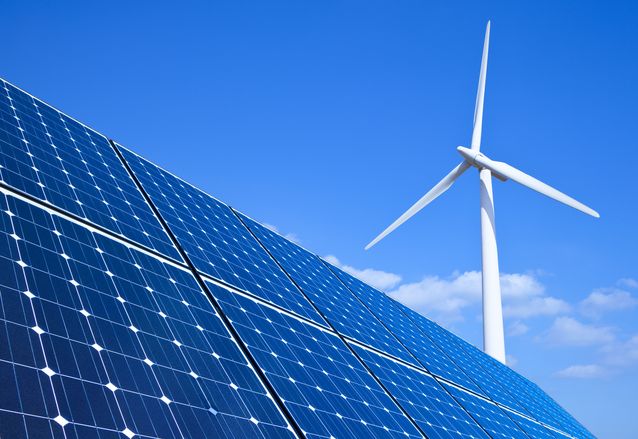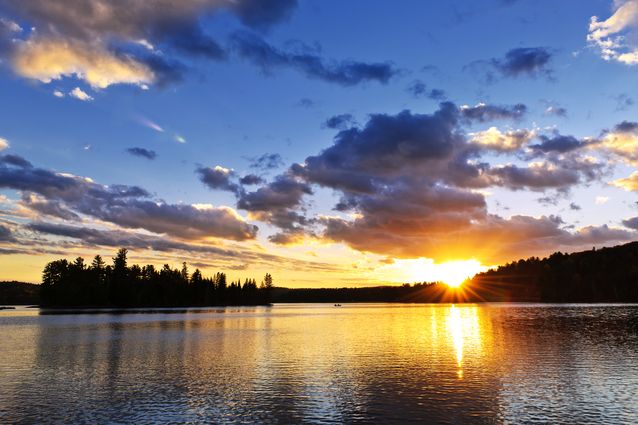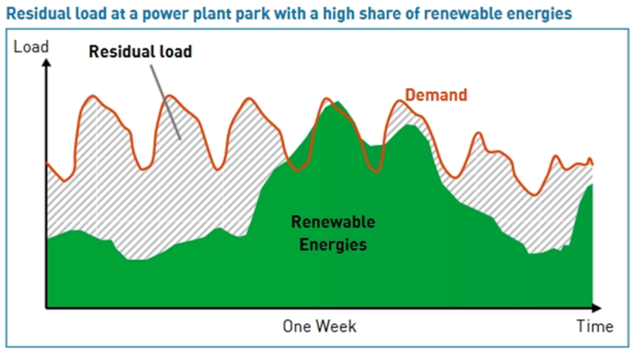
Wind and solar energy need balancing power, because wind dies down every now and then, and the sun goes down every day. The type of the balancing power has an enormous impact on the total carbon footprint of the energy production. The use of renewable energy should always be planned along with decisions about balancing power.
One out of 10 Finns believes that nuclear power generates more carbon dioxide emissions than any other form of energy production [1]. However, even though nuclear power is otherwise problematic, generating it produces hardly any carbon dioxide emissions.
It is very common to misunderstand and mix facts and consequences of anything related to energy production and CO2 emissions. It is a complicated world requiring deeper scrutiny. If you don’t see the big picture, you may end up somewhere other than where you planned.
People want often to cut greenhouse gas emissions by increasing the use of solar and wind power. Generally, that is a great idea - but you don’t necessarily get the CO2 emissions down unless you pay attention to power usage and generation as a whole solution.

Solar and wind energy are great energy sources. According to the US Department of Energy and calculations made at its National Renewable Energy Laboratory (NREL), coal’s carbon footprint is almost 90 times larger than that of wind energy. If you calculate the emissions of the whole life cycle, the amount of greenhouse gases gets higher - but still, the “life cycle greenhouse gas emissions from solar, wind, and nuclear technologies are considerably lower and less variable than emissions from technologies powered by combustion-based natural gas and coal”, says the NREL [2].
The price of wind and solar energy has also decreased radically, making them economically feasible alternatives for energy production. Prices of solar panels have dropped some 70% in the last eight years, and turbines cost only half what they did in 2010 [3].
However, these low emission numbers are not the whole truth.
Renewable power needs balancing power - and that changes the picture

The problem is that every now and then, the wind dies down, and the sun always sets at the end of every day. Actually, hardly any renewable power sources operate with their nominal capacity more than half the time. Electricity, however, is needed 24/7. Therefore, energy storage capacity or balancing power is needed. Electricity is relatively easy to transport with cables, but at the moment, storage is quite expensive, and on larger scales, it is very difficult. For example, battery and hydrogen storage solutions are interesting, but they are not really ready for large-scale solutions. The only feasible solution available now to support renewable energy generation is balancing power. Let’s give a thought to the issues associated with it.
First, let’s make a simple calculation to understand the CO2 emissions related to balancing power.
- Wind energy produces around 12 grams of CO2 per kWh of electricity generated during its whole life cycle [4].
- Coal energy produces around 980 grams of CO2 per kWh [5].
- Natural gas produces around 465 grams of CO2 per kWh [6].
If you get half your energy from the wind and half from the coal you use as balancing power, you still produce more CO2 emissions than if you get all your energy from burning a different fossil fuel, natural gas.
Let’s make a bit more thorough calculation to get closer to real life. We assume that we have a wind farm of 100 MW and the availability factor - the percentual share of power it produces with its nominal capacity - is 40%. The windmills will naturally spin more times than this, but some of the time, they do not produce power at their full capacity. The 40% is achievable with modern, relatively large windmills - the older and smaller ones have lower availabilities.

If we use coal as balancing energy, the total amount of life-cycle CO2 emissions of the coal and wind combined is almost 520 000 tCO2. When using natural gas to produce the balancing power, the amount of life-cycle CO2 emissions is around 250 000 tCO2, less than 50% that of using coal. Also, coal produces much more SO2 and NOX emissions and fine particles, leading to smog and poor air quality.
The difference is huge. It really matters how you make your balancing power. By executing your plans without thinking more deeply, you may even increase your CO2 emissions when you want to cut them down.
Germany could do much better
Germany is widely considered a top-class investor and pathfinder in renewable energy. German consumers pay the highest price for the electricity in Europe, which, among other things, encourages people to save energy however they can.
However, if we compare Germany and France, we see France emitting far less CO2 per capita than Germany. In 2016, Germany's electricity was nearly 10 times dirtier than France's when measured by the CO2 emissions [8]. And it doesn’t stop with CO2 emissions alone; if you compare the local particle emissions, NOX emissions or CO emissions, France is an overall less emitting country than Germany is in terms of power generation.

Despite investing so heavily in renewable energy, the German emissions of CO2 have stagnated at the same level for the third year in a row [9]. One main reason for the high emissions in Germany is the use of coal as a “buffer” energy source when producing wind and solar energy [10]. In the real world, coal power generation is very difficult to use as a real balancing power because it is slow to control. Consequently, Germany actually exports excess power produced by its large renewable generation facilities to its neighbouring countries. That’s why “buffering” is in quotation marks.
Auctions may lead to bigger emissions
To cut CO2 emissions, many governments are making serious efforts to promote the use of renewable energy. The goal is very crucial and promoting the use of renewable energy is important.
Some 60 countries have been welcoming tenders for grants of the use of renewable energy [11]. Details and the ways to run competitive procurements vary, but the core principle in most countries is more or less the same: the cheapest offer wins.
For instance, in Finland, the national energy authority is at the moment welcoming tenders for the grants available for renewable energy production [12]. Offers can be made by wind power, solar power, biomass, biogas and wave power generators. The ones requiring the smallest grants will win the auction.
It sounds like a good way to save taxpayers’ money and still push the use of renewable energy. This competition, however, is in many cases far from being the most efficient way of reducing the CO2 emissions.
Look at the big picture when planning an auction
Investments in research and development of renewable energy are paying off. According to the International Renewable Energy Agency (IRENA), renewable power generation costs continue to fall and are already very competitive to meet the needs for new capacity even without any preemies [13].
Major renewable energy technologies (wind, solar, some biogases) should be price-competitive with fossil fuels by 2020 in most market regions. It naturally still depends on the regions and natural conditions, among other things, which alternatives really are economically feasible for each project.
If we only think of the grants the society has to pay, such auctions work well. But if we really want to reduce CO2 emissions, we should ask how the bidding solutions really are reducing those emissions.

For instance, in some cases, wind energy might be the cheapest option, but additional use of coal changes its impact on the environment. Using biogas might be in that particular case costlier, but because biogas doesn’t require additional energy sources for buffer energy, its impact might be environmentally friendlier. If biogas is only used as a balancing power, the final bill is not that bad either, but the combination of wind power and biogas as balancing power may still be cheaper than using nuclear power, for instance [14].
Therefore, the auctions should be made between packet tenders that include both the use of renewable energy and the renewable or non-renewable balancing power. Only if we can compare the CO2 emissions of the entities can we see the bigger picture and choose the best alternative for our planet. Which country will show the way?
-------------------------------------------------------------------------------
- http://www.poyry.fi/uutiset/alle-puolet-suomalaisista-luottaa-ihmiskunnan-kykyyn-ratkaista-hiilidioksidiongelmat
- https://www.factcheck.org/2018/03/wind-energys-carbon-footprint/
- Bloomberg New Energy Finance Q3 Globalk PV and Global Wind Market Outlook
- https://onlinelibrary.wiley.com/doi/abs/10.1111/j.1530-9290.2012.0046x
- https://onlinelibrary.wiley.com/doi/full/10.1111/j.1530-9290.2012.0046x
- http://www.pnas.org/content/early/2014/07/16/1309334111
- https://grist.org/renewable-energy/why-germany-is-phasing-out-nuclear-power/
- http://environmentalprogress.org/big-news/2017/2/11/german-electricity-was-nearly-10-times-dirtier-than-frances-in-2016
- https://www.agora-energiewende.de/en/press/news-archive/records-with-renewables-but-once-again-no-progress-on-co2-emissions-2017-was-a-year-of-mixed-su/
- https://www.forbes.com/sites/jamesconca/2017/10/10/why-arent-renewables-decreasing-germanys-carbon-emissions/#f70e95d68e15
- http://www.tuulivoimayhdistys.fi/tietoa-tuulivoimasta/tietoa-tuulivoimasta/taloudellisuus/uusiutuvan-energian-tukeminen/tuet-suomessa/mita-uusiutuvan-energian-tuotantotuen-kilpailutus-tarkoittaa
- https://www.energiavirasto.fi/-/tarjouskilpailu-uusiutuvan-energian-tuista
- http://www.irena.org/publications/2018/Jan/Renewable-power-generation-costs-in-2017
- Kujala Saara, Pitsinki Juha, Rautkivi Matti, Räty Antti: Puhallus. Tuulivoimalla menestykseen. Wärtsilä Corporation 2018.
